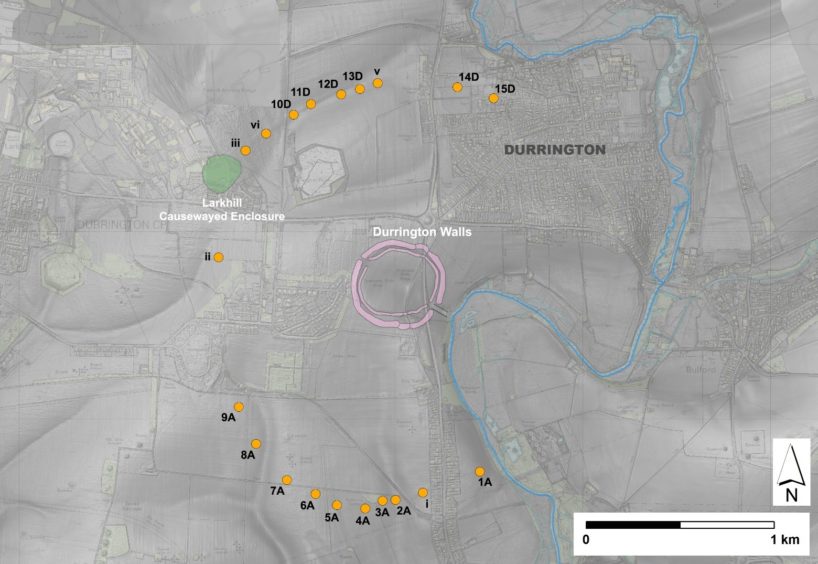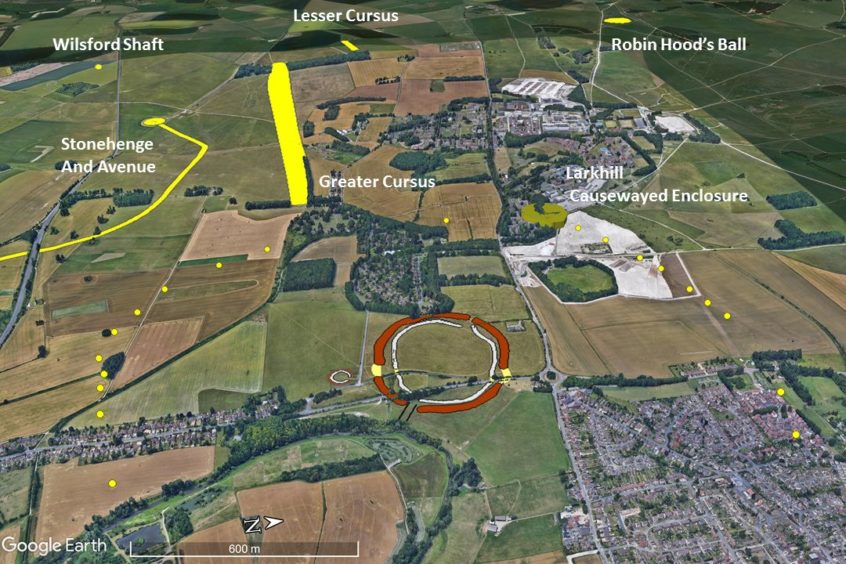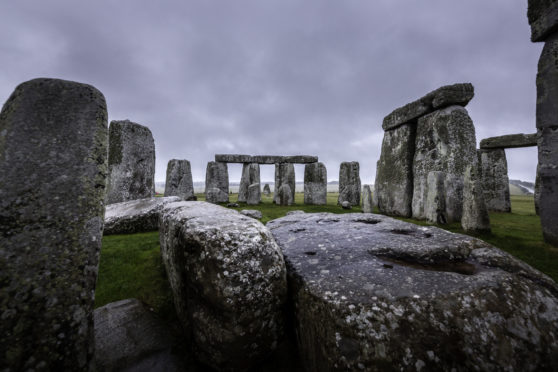Boffins at St Andrews University have helped unearth the secrets of Stonehenge with the discovery of a never before seen Neolithic structure.
A team including Fife academics discovered huge prehistoric shafts which form a circle around Durrington Walls in Wiltshire, which they believed formed a “sacred boundary” near Stonehenge, the country’s most famous stone circle.
The “sacred” circle is more than a mile in diameter and no other Neolithic structure discovered to date covers such a large area.

Coinciding with the summer solstice, which is linked with Stonehenge because the stones are lined up with the movements of the sun, it has been described as an “astonishing discovery”.
Dr Nick Snashall, National Trust archaeologist for the Stonehenge and Avebury World Heritage Site, said: “As the place where the builders of Stonehenge lived and feasted Durrington Walls is key to unlocking the story of the wider Stonehenge landscape, and this astonishing discovery offers us new insights into the lives and beliefs of our Neolithic ancestors.
“The Hidden Landscapes team have combined cutting-edge, archaeological fieldwork with good old-fashioned detective work to reveal this extraordinary discovery and write a whole new chapter in the story of the Stonehenge landscape.”

Fieldwork and analysis revealed evidence for twenty or more prehistoric shafts, more than 32ft in diameter and 16ft deep.
Using radiocarbon dating, the researchers estimated the shafts were excavated more than 4,500 years ago, around the time that Durrington Walls was constructed.
Dr Richard Bates from the School of Earth and Environmental Sciences at St Andrews University said: “Seeing what is unseen: Yet again, the use of a multidisciplinary effort with remote sensing and careful sampling is giving us an insight to the past that shows an even more complex society than we could ever imagine.
“Clearly sophisticated practices demonstrate that the people were so in tune with natural events to an extent that we can barely conceive in the modern world we live in today.”
The boundary of the newly discovered structure appears to have been deliberately laid out to include an earlier prehistoric monument – the Larkhill Causewayed Enclosure. This site was built more than 1,500 years before the henge at Durrington.
Archaeologists believe the effort invested in the circuit inscribed by the pits reflects an important cosmological link between the two ritual sites.
And researchers said it is evidence that the early inhabitants of Britain used a tally or counting system to track pacing across long distances.
It is believed the structure guided people towards the religious sites within the circle or may have warned those who were not permitted to cross the boundary marked by the shafts.
The research involved experts from St Andrews, Birmingham and Warwick universities, the University of Wales Trinity Saint David, and the Scottish Universities Environmental Research Centre based at Glasgow University. Work at Durrington was facilitated by the National Trust and supported by the University of Bradford Research Development Fund.
The full report from the research at Durrington has been published as an open access article by Internet Archaeology.










